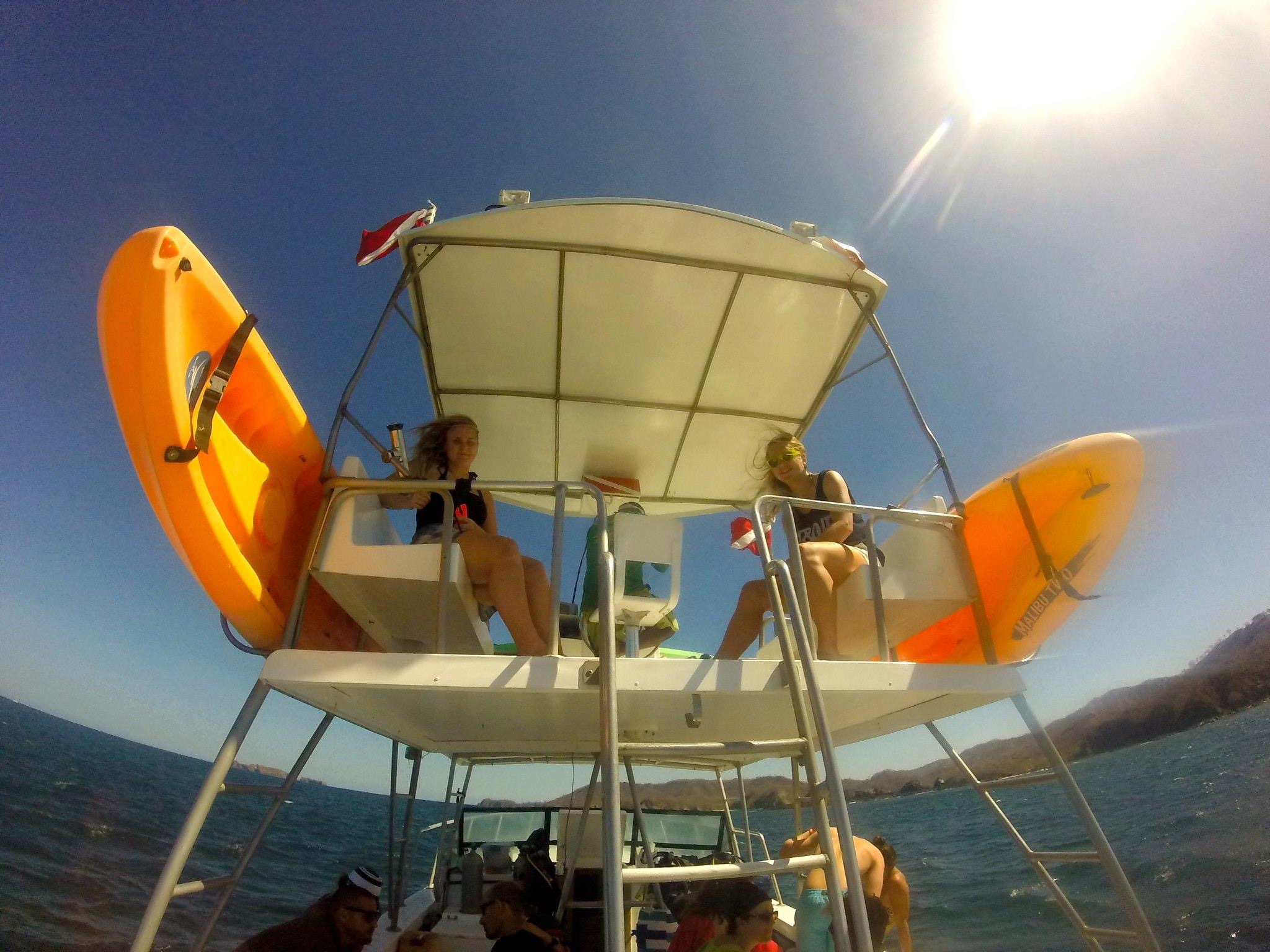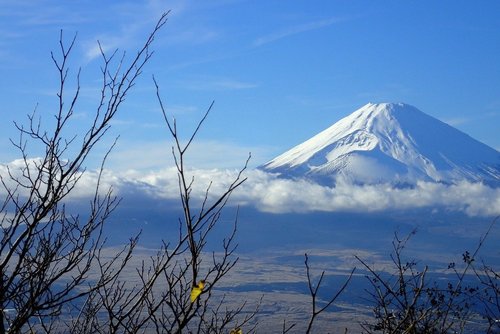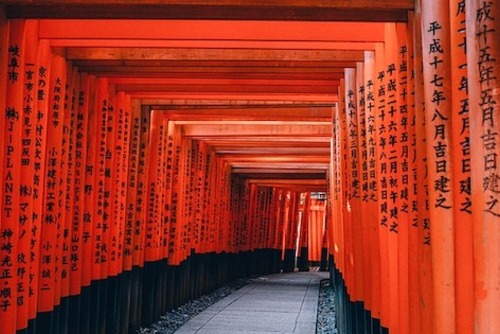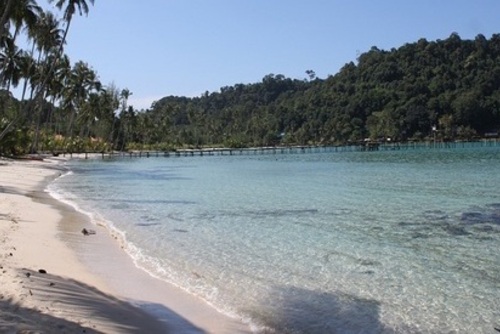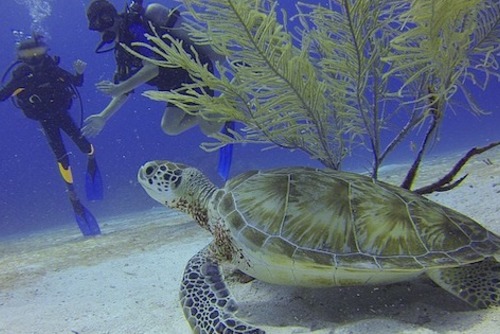Guide to Going Scuba Diving in Japan
If you would like to go diving for the first time in Japan, our guide to diving in The Land of the Rising Sun will help you arrange a package.
Popular Places to Go Diving in Japan
Okinawa
The Okinawa island chain is popular because water temperatures rarely go below 20C so it's a great option for divers who are still keen to get into the water even in mid-winter, and its atmosphere resembles that of an island in the South Pacific. Okinawa is about 2.5 - 3 hours by plane from Tokyo. One of the most frequented spots is the island of Ishigakijima. With direct flights from Tokyo and Osaka, manta rays often emerge to greet divers while you can also explore other spots full of coral gardens, nudibranchs and cuttlefish that spawn in January.
Okinawa's Yonaguni is the last in the Okinawa Island chain before you reach Taiwan. It's famous for some huge underwater stone ruins that look as though they were manmade but some say they were formed naturally. Yonaguni is mostly drift diving, and the strong currents and hammerhead shark sightings are a huge draw for more experienced divers.
Kii Peninsula
This peninsula is the largest in Japan, full of underwater wonderlands and a great mixt of the tropical and subtropical. The further south the warmer the water, and the best places to dive here are Kushimoto and Shirahama with their warm springs and stunning coral gardens. The area is an ideal home for technicolour fish, macrolife and other sea creatures. Some highlights are schools of half-lined cardinal fish, pike blennies and black-bar chromis. Meanwhile, at 1.8km off Kushimoto is Oshima island, a huge rock formation covered with a riot of life, a smattering of soft coral and dense rich colours.
Izu
The Izu peninsula west of Tokyo is one of the easiest spots to get to from the capital. With a great diversity of dive sites and marine life, Izu is a fantastic destination with very rewarding diving. Sightings include moray eels, octopus and soft coral gardens in the areas of Osezaki and Atami, as well as a sheltered bay in Osezaki that's great for dive training and one of Japan's only divable wrecks in Atami. Also popular in the Izu region is the Izu Island chain, an island group that spreads south of Tokyo Bay and well known for its variety of dive sites. Oshima, the northernmost island, is less than two hours by high-speed ferry from Tokyo and an easy weekend destination. Heading south, the islands of Kozushima and Hachijojima offer swarms of fish, turtles, beautiful shore diving, and a range of nudibranchs and other interesting critters. The Yuzen, or Wrought Iron Butterfly Fish found only in Hachijojima, is also a sight to behold.
Hokkaido
Ice diving on Japan's northern island is a favourite sport from January to March. Frozen ice from the Sea of Okhotsk breaks up, detaches from the coast and is blown south by a northerly wind. Its journey ends at the northeastern Shiretoko Peninsula, and marks the start of Hokkaido's ice diving season, an ideal opportunity for those who want to try something a little more adventurous and catch a glimpse of the clione, a tiny and enchanting water-borne fairy. With a transparent body, wings and cute ears, it looks a lot like an angel and almost seems to be flying as it flaps its wings. The combination of sunlight and the extraordinary formation of the ice above creates and interesting and ever-changing array of colour during the dive.
Dive Shops in Japan Where English is Available
OKINAWA
- Ishigaki Island: Dive School Umicoza is located at Kabira Bay with beginner packages and various fun dives available.
- Yonaguni Island: Sou-Wes Diving is a family-run business and its founder was the first person to discover the underwater monument. The shop can arrange accommodation as well as a range of fun dives.
KII PENINSULA
- Kushimoto: Dive Kooza is a fun and friendly shop with bunk beds available for divers visiting for a weekend and want to do a couple of days' diving. All dives can be arranged through Kansai Divers where English is spoken.
- Oshima Island: Sue Diving Center was formally a school that's been converted into a huge dive shop. Kansai Divers can arrange dive trips, accommodation and other logistics.
IZU
- Kozushima: Nangoku is a fun and friendly dive shop located just across the road from one of Kozushima's main beaches. They can help with accommodation, shopping etc and also run night tours of the island.
- Osezaki, Atami, Oshima, Hachijojima: Fun dives to all these sites can be arranged through Discovery Divers Tokyo.
HOKKAIDO
- Shiretoko Peninsula: Kansai Divers has further information on Hokkaido's ice diving trips, and can arrange tours during the season.
- Discovery Divers Tokyo is an English-speaking group that conducts a variety of recreational, leadership and technical courses (PADI and NAUI) as well as day and weekend trips to areas around Tokyo for fun diving. Kansai Divers (the sister group of Discovery Divers Tokyo) is based in the Osaka/Kobe area and runs trips to the Kii Peninsula during the summer, and Hokkaido in the winter for ice diving. See their Facebook page for more information.
Types of Dive Courses and Clubs Available in Japan
Japan's dive shops offer a range of recreational and professional dive courses. Most offer these as part of a PADI certification, with PADI Advanced Diver, Rescue Diver and various speciality courses for those wishing to continue learning and improving their skills. Some shops also offer NAUI and SSI courses. Everything will generally be designed to fit the diver's requests and schedule. If you don't have much time, try dives can be done in one day, and PADI Open Water over a minimum of 3 days.
Best Time of Year to Dive in Japan
- Okinawa: Diving is available throughout the year, with the water rarely reaching below 20C but in January and February the temperature can sometimes to dip to around 17C - 19C. The manta rays off Ishigaki Island mate in October and November so this is the best time of year for manta sightings.
- Kii Peninsula and Izu: As the Kuroshio Current makes its way past Japan around May, the water slowly begins to warm up and the diving becomes more comfortable. The best time of year is generally anytime between May/June and November. Dry suit diving is available in winter.
- Hokkaido: the ice diving season begins from January to March with February the best and most popular time.
Please note that July - September/October is typhoon season in Japan. Although it's also the best time of year to be diving across the country, typhoons can occur at anytime and wreak havoc with your plans! Make sure you are up to date with the latest weather information before diving in the summer.
Cost
The cost of learning to dive in Japan will differ depending on where you learn, what time of year you visit and the type of course you are interested in taking. Some dive shops offer discounts and transport/accommodation/course packages but in general diving in Japan can be expensive.
Points to Note
Japan does not generally encourage solo diving. This style is available in Osezaki, and the English-speaking groups (Discovery Divers and Kansai Divers) are working to encourage it further, but usually dive shops will assign you and your buddy (or your group) a dive guide who will show you around while you follow from behind.
By Bonnie Waycott


